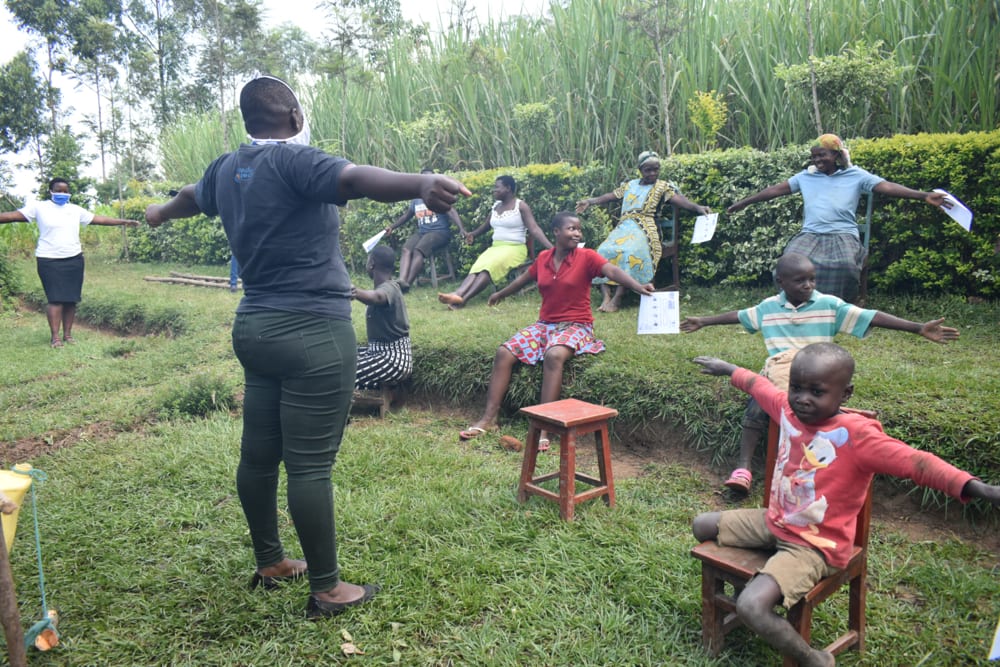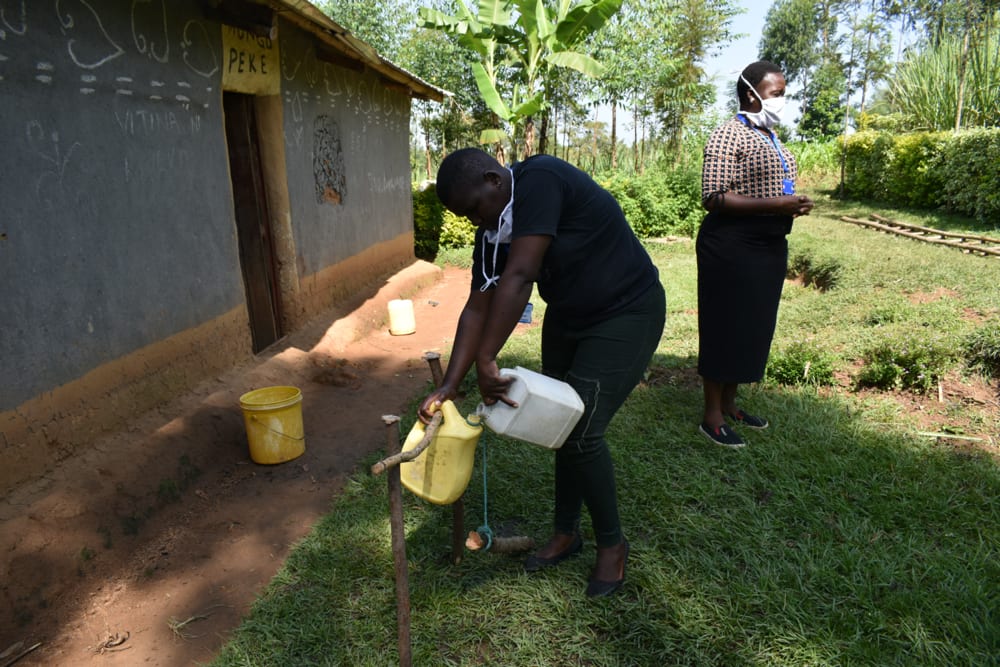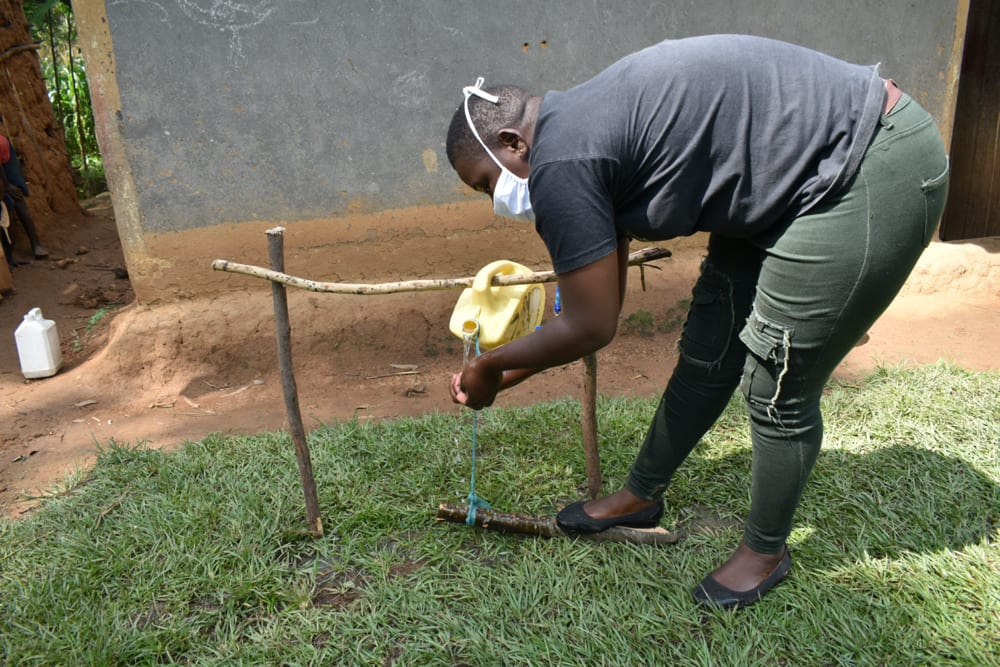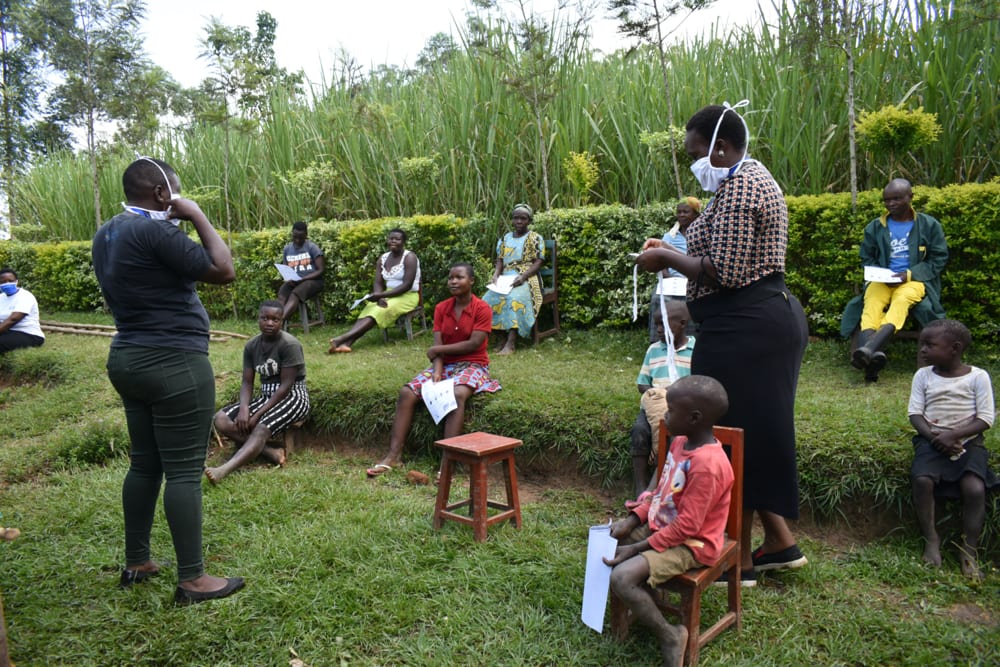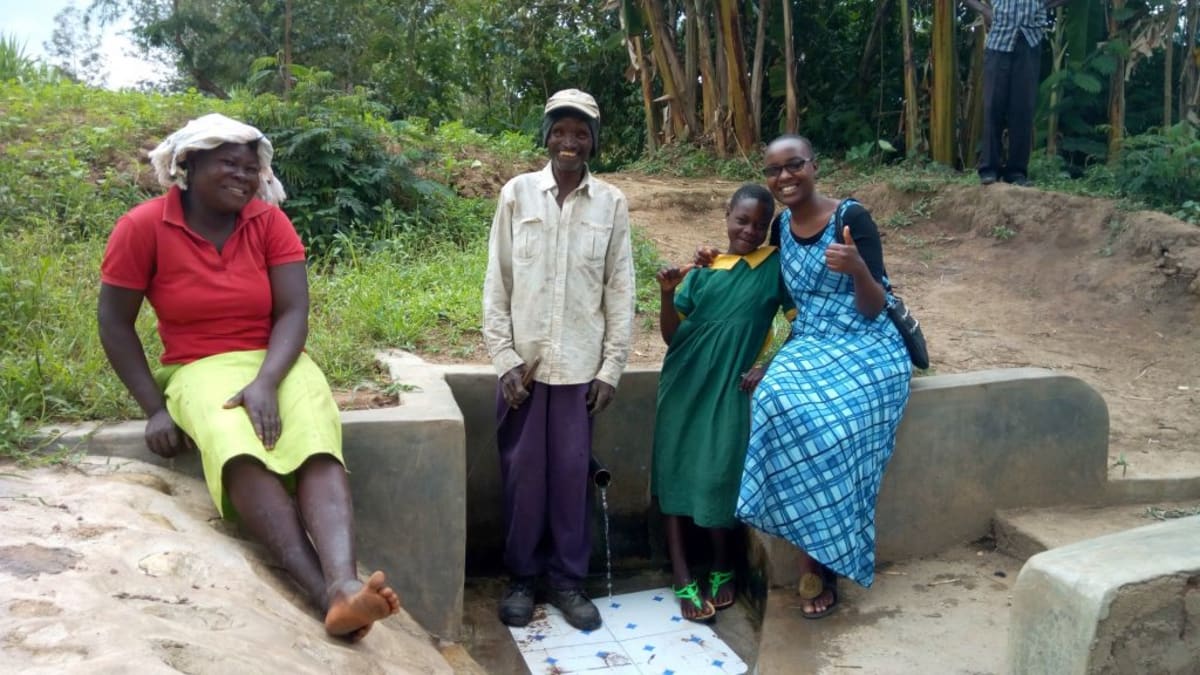This project is a part of our shared program with Western Water and Sanitation Forum (WEWASAFO). Our team is pleased to directly share the below report (edited for clarity, as needed).
Welcome to the Community
The 210 people of Shikoti Village wake up very early in the morning to work on their farms and prepare their children to go to school. The community living around the spring keeps dairy cattle and grows maize, sugar cane, bananas and vegetables. This not only provides the food they need to eat, but also generates income to pay for their children’s education. It is a hard-working community! Brick-making is another vibrant economic activity, owing to the many construction projects going on in the area. The domestic work is predominantly done by women.
This community heard about the spring protection work going on in the neighboring administrative ward. They wrote a request letter to our executive director who then instructed that a baseline survey be conducted to ascertain the eligibility of the spring. The report was positive, and approval for spring protection was secured. “This is a God-given opportunity... protecting the Amboka Spring will solve their [our] water problems” Lillian Amboka exclaimed.
Water Situation
Amboka Spring has a good discharge and does not run dry during the driest periods of the year as was experienced between December and February. Unfortunately, this spring is contaminated by surface runoff, improper waste disposal, open defecation, bacteria and soil erosion. Its yellowish color should warn anyone to stay away. However, this is the source for water - to wash with, to drink, to bathe and cook with.
It takes quite a bit of time to scoop the water using buckets, jugs and small sufurias (shallow pans). The villagers take it to their homes and store it in earthen pots and plastic containers of 50 to 100 liters, some with covers, others without. The water containers are occasionally cleaned with leaves and bar soap, if the insides are accessible. Sometimes water, sand and leaves are pushed into the openings of the jerrycans and swished around to clean the inside.
Most here have suffered from waterborne diseases such as typhoid, diarrhea, amoeba as well as malaria from mosquito-breeding in the stagnant water hole. Very young children and the elderly are the most susceptible. Most of the residents around the spring lack basic knowledge of waterborne diseases and their prevention. They are easy targets for the myriad of bacteria and parasites they ingest in the water that they need in order to live!
Sanitation Situation
A mere 25 - 50% households here have pit latrines. The floors are made of cut branches and the superstructures - banana leaves, polythene papers, mud or iron sheeting - whatever they have on hand. They are often rickety structures that offer little privacy and can become unsafe after years of use. Since the wood floors cannot be cleaned, they can decay to the point of collapsing, oftentimes while in use.
Most of the 30 households don’t have dish racks or clotheslines and so items are left on the ground, the roof or nearby bushes. Garbage is carelessly strewn around the compounds or thrown in the gardens to, someday, become compost.
Plans: Hygiene and Sanitation Training
Community members will attend hygiene and sanitation training for at least two days. This training will ensure participants are no longer ignorant about healthy practices and their importance. The facilitator plans to use PHAST (Participatory Hygiene and Sanitation Transformation), CLTS (Community-Led Total Sanitation), ABCD (Asset-Based Community Development), group discussions, handouts and demonstrations at the spring.
Training will also result in the formation of a committee that will oversee operations and maintenance at the spring. They will enforce proper behavior around the spring and delegate tasks that will help preserve the site, such as building a fence and digging proper drainage. Moreover the sanitation facilities and health promotion campaign through trainings will enable, enlighten the community to consider community health matters as high priorities.
Plans: Sanitation Platforms
On the final day of training, the Shikoti Community will select five of its families to benefit from new latrines. The five families must prepare by sinking a pit over which the sanitation platforms will be placed.
Plans: Spring Protection
The community in general will provide the locally available materials such as: ballast, hardcore (crushed rocks and gravel), clean sand, poles for fencing, unskilled labour, and accommodation and food for the work team.
A number of people will participate directly by providing unskilled labor in fencing the spring, planting the grass around the spring, supervising construction work and monitoring the progress, feeding and lodging the artisan.
Protecting the spring will ensure that the water is safe, adequate and secure. Construction will keep surface runoff and other contaminants out of the water.
Fetching water is predominantly a female role, done by both women and young girls. So, additionally, protecting the spring and offering training and support will empower the female members of the community by freeing up more time and energy to engage and invest in income-generating activities and enriching family life.

 Protected Spring
Protected Spring
 Rehabilitation Project
Rehabilitation Project









